Posted: November 29th, 2016 | No Comments »
Back in 2010 I visited Lin Yutang’s house in Taipei, which is now a museum. I blogged about his Taipei house and noted that ETC Werner’s 1922 classic Myths and Legends of China was on his bookshelf. But, in 2010, I didn’t have a camera phone so I never got a chance to snap it. Recently the excellent writer on matters Chinese Michael Meyer visited the house and he did have a camera phone and got a shot of the book proudly displayed on Lin’s shelves.

Posted: August 19th, 2016 | No Comments »
IThe old Fuhsingkang Film Production Studio is in Taipei. It is not used anymore and, though the last film made there was 1995, its heyday was really the 1950s and 1960s. As with everything about the early days of the Republic of China in Taiwan it was under the control of the military – specifically the Ministry of Defense Political Warfare Division. It is also the case that the history of the Fuhsingkang Film Production Studio is intertwined with that of Shanghai.
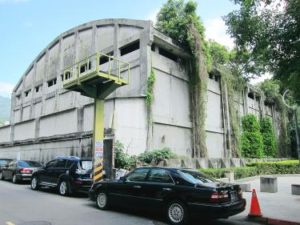
After 1949 of course some of the stars, directors, screenwriters and technicians associated with the Shanghai cinema industry remained in mainland China and took their chances with the new communist leadership (invariably that did not end well!). Many went to Hong Kong and that story is well known I think. Only an estimated 5% of the Shanghai film industry went with the KMT to Taiwan and (according to James Udden’s informative No Man an Island: The Cinema of Hou Hsiao-hsien) most of those were people who had worked on educational and propaganda films. Udden says this meant Taiwan got a lot of technical equipment and fair amount of expertise but rather less creative talent. However, some classics were produced – Storm Over the Yangtze River (1969 – pictured below), The Story of Tin-Ying (1970).
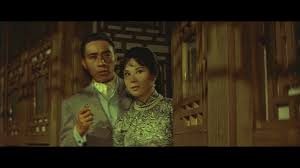
Now the Taipei authorities are about to decide whether to bulldoze the old site and build a new film studios (though some might say that Taipei’s Beitou District is a little too crowded for a major studio?) or turn the existing buildings into a museum of Taiwanese cinema and a film school. I rather hope the latter personally.
Posted: March 20th, 2015 | No Comments »
Shanghai destroys, Beijing obliterates…it’s hard not to contrast the non-policy of preservation in mainland China with the growing preservation movement in Taiwan. The latest campaign to win historical preservation status in Taipei is the Taipei Railway Workshops. This decision from the Cultural Heritage Bureau overrules previous plans to give most of the site to a developer. The compound will now be preserved in its entirety, while the historic workshop itself will be renovated to house a railway museum.
Constructed in the 1930s during Japanese colonial rule, the Taipei Railway Workshop was known as the “hospital†for the nation’s trains, and considered the most important railway maintenance depot in Taiwan. The compound features an impressive office block, an engine room and a Japanese-style bath house, as well as substantial gardens – it ain’t just any railway workshop this one!
Very well done to the Taipei Railway Workshop Heritage Conservation Union; tough shit to the Taiwan Railways Administration (TRA), eager as ever to sell of heritage to grab cash (see the search box under Taiwan to see more examples of the TRA’s venal attempts to dump heritage for fast bucks)



Posted: January 28th, 2015 | No Comments »
More good preservation news from Taiwan (which comes in almost inverse proportion to preservation news from mainland China!!) – Taipei’s Losheng Sanatorium is to be renovated. The 1930s building was constructed as a leper colony originally under the Japanese colonial administration. It was a site of compulsory quarantine but quite pleasant it seems (though reportedly overcrowded). After the Japanese left the KMT kept it in operation as a sanatorium. Despite a cure for leprosy being introduced in Taiwan in 1954 many inmates could not easily readjust to normal life, were simply too scarred or had been isolated too long and so remained at the site. Since 1994 the Taipei MRT has been trying to bulldoze the buildings for a storage shed. However Taiwan’s Cultural Affairs Department has now announced that it will restore the site. There’s more here on the long-running preservation campaign.
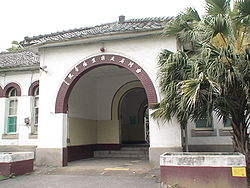
The entrance…
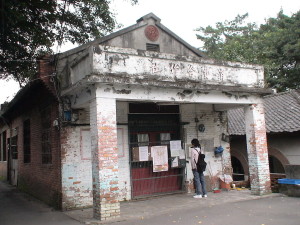
the former sanatorium shop
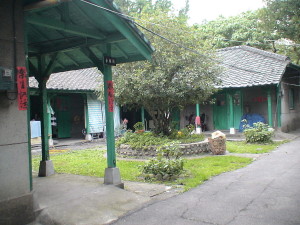
patient huts
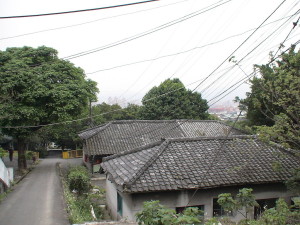
view across the sanatorium
Posted: January 2nd, 2015 | No Comments »
Jonathan Goldstein’s Jewish Identities in East Asia is a tad pricey, so probably a trip to the college library is involved….
 The Jewish communities of East and Southeast Asia display an impressive diversity. Jonathan Goldstein book focuses on transnational Jewish identity in seven of this area’s largest cities and trading emporia: Singapore, Manila, Taipei, Harbin, Shanghai, Rangoon, and Surabaya. What was the source of this enduring identity, which included strong elements of Russian, Chinese, Japanese, but also specifically Jewish culture? What had preserved the Jewish identity under such excruciating circumstances? The book covers the period 1750 up to the present and emphasizes five factors which influenced the formation of Jewish transnational identity in these places: memory, colonialism, regional nationalism, socialism, and Zionism.
The Jewish communities of East and Southeast Asia display an impressive diversity. Jonathan Goldstein book focuses on transnational Jewish identity in seven of this area’s largest cities and trading emporia: Singapore, Manila, Taipei, Harbin, Shanghai, Rangoon, and Surabaya. What was the source of this enduring identity, which included strong elements of Russian, Chinese, Japanese, but also specifically Jewish culture? What had preserved the Jewish identity under such excruciating circumstances? The book covers the period 1750 up to the present and emphasizes five factors which influenced the formation of Jewish transnational identity in these places: memory, colonialism, regional nationalism, socialism, and Zionism.
Posted: October 25th, 2014 | No Comments »
It seems Taipei has really started to get its act together as regards preserving historic buildings. I’ve blogged before about the Dihua Street restoration and other projects. Now it has been announced that Tsaoshan Police Station will be preserved as a local government-listed historic building, according to Taipei City’s Department of Cultural Affairs. The station was designed by architect Ide Kaoru, a chief engineer in Taiwan during the Japanese colonial period (1895-1945), and the man behind the listed Zhongshan Hall. The station is in the Yangmingshan district which I’ve blogged about repeatedly and is an area full of architectural candidates for preservation that are both of interest and have a historic role in Taipei’s history.
More good news, and correcting bad decisions of the past, is that the building is located close to the site of Taiwan Railways Administration’s 100-year-old Xinbeitou Station, which was dismantled in 1988 to make way for the Tamsui metro line and is now scheduled for reassembly this year. The authorities have approved shifting the station 50 meters from its original position and allocated NT$20.6 million (US$678,425) for the undertaking.
Now a couple of other suggestions for preservation in the area:
The Aifu Road bungalows, which have always looked like potentially highly desirable residences to me – more on them here too
the Grass Mountain waterworks

Tsaoshan Police Station

The old Xinbeitou Railway Station – scheduled to be rebuilt this year
Posted: October 22nd, 2014 | No Comments »
How excellent to see that the restoration of Taipei’s Dihua Street in the city’s Dadaocheng district has been continued (I blogged about the start of the process here back in 2011) and is being celebrated by local residents. Since I last wrote about the restoration of the 1920s local businesses have moved in with a bookstore, art gallery, pottery etc etc…It’s a pretty good example of how facades can be preserved, new businesses adopt the properties with government support and a community come together to celebrate both heritage (largely free of PRC like political correctness) and commercialization to maintain the area. The Taipei Times has an article on the now annual 1920s festival organised along the street. Around the same time, in 2011, I posted on several impressive buildings nearby that are also in need of refurbishment and, given the public and commercial success of Dihua Street, may get a makeover and be better preserved now. Shanghai, Beijing and a host of other Chinese towns and cities would do well to take a closer look at the Dihua Street initiative.

Dihua Street on a busy market day
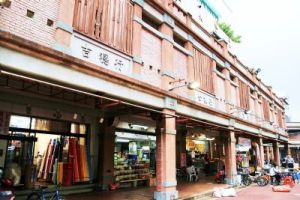
Restored colonnades and shops

Key corner building and colonnades

Nicely restored facades

Shop houses and street – still functioning without being ersatzed into a pedestrian street or Xintiandi type faux attraction – remaining a working, vibrant, commercial street with shops, cafes etc for all wallet sizes and not just the nouveau riche and tourists
Posted: October 4th, 2014 | No Comments »
Positive news from Taipei where the historic Wenmeng Building is to be preserved and excluded from an urban renewal project, according to Taipei City Government’s Urban Regeneration Office. A private property developer had wanted to raise it, and put up a 20-story building, but that has been stopped for now. The 92sqm structure in Datong dates back to 1925 and was the well site of a former brothel and is home now to the Collective of Sex Workers and Supporters, an NGO working with, well, sex workers. It also houses a private sex industry museum and accommodation for ex-licensed prostitutes. A spokeswoman for the Collective spokeswoman commented, “Although the sex industry was outlawed by Taipei City Government in 1997, it is still wrong to bury the past under development projects,†– and so it is. Hundreds of protestors – sex worker activists and preservationists in a rather unusual alliance had campaigned to defend the building. The former brothel also has some nice examples of period brick houses on either side of it and the area was once a noted red light district.



















